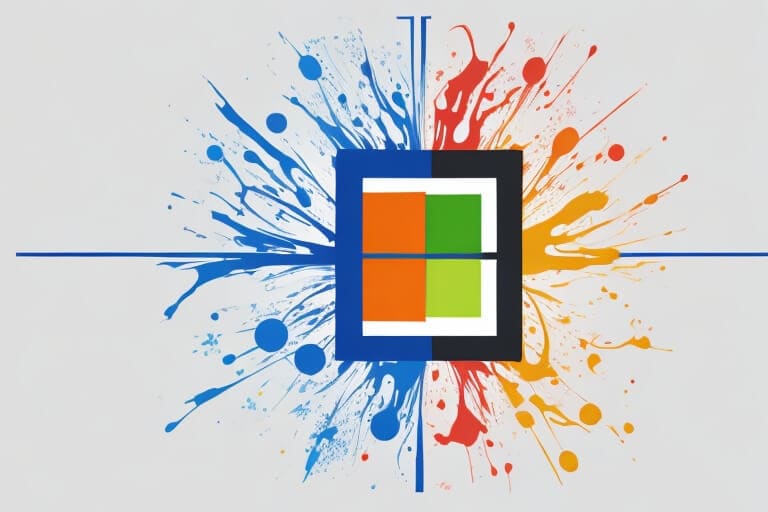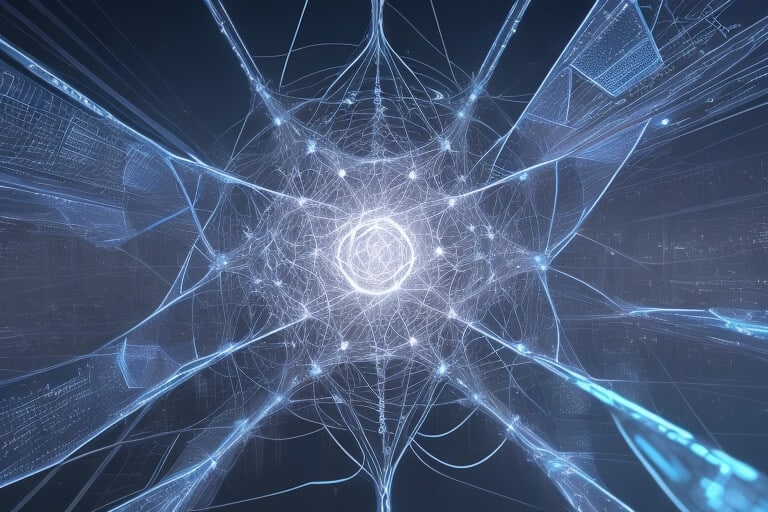Microsoft’s Quantum Development Kit

- September 11, 2023
- allix
- AI Education
As classical computers struggle to keep up with the demands of increasingly complex AI algorithms, quantum computers promise to revolutionize the field. Microsoft, a pioneer in technology, has taken a giant leap forward with its Quantum Development Kit, designed to empower AI enthusiasts and developers to explore the fascinating realm of quantum machine learning.
Unraveling Quantum Computing
Unlike classical computers, which use bits as the smallest unit of data, quantum computers employ quantum bits or qubits. Qubits can exist in multiple states simultaneously, thanks to the principle of superposition, and they can also be entangled, meaning the state of one qubit is correlated with the state of another, regardless of the distance between them. This unique behavior allows quantum computers to perform certain tasks exponentially faster than classical computers.
Quantum computing holds immense potential in solving complex problems that are practically insurmountable for classical computers. These include optimization problems, cryptography, material science simulations, and, importantly, machine learning.
Quantum computing is fundamentally different from classical computing, with its foundation built on principles of quantum mechanics. Classical computers use bits as the smallest units of data, which can either be in a state of 0 or 1. Quantum computers, on the other hand, utilize quantum bits or qubits. What sets qubits apart is their ability to exist in multiple states simultaneously, a phenomenon known as superposition. This means that a qubit can represent 0, 1, or any quantum superposition of these states. Qubits can be entangled, which means the state of one qubit is intrinsically linked to the state of another, regardless of their physical separation. These inherent properties of qubits give quantum computers a unique advantage over classical computers for certain types of problems.
Quantum computing holds immense promise, particularly in tackling problems that are computationally intensive and beyond the capabilities of classical computers. For instance, optimization problems involving a large number of variables, such as those encountered in logistics or financial modeling, can be solved more efficiently with quantum algorithms. Quantum computers also have the potential to revolutionize cryptography by rendering many classical encryption methods obsolete. Furthermore, quantum simulations can provide unprecedented insights into complex physical systems, with applications ranging from drug discovery to materials science.
The Intersection of Quantum and Machine Learning
Machine learning, a subset of AI, relies heavily on processing large datasets and optimizing algorithms to make predictions and decisions. As AI continues to advance, the need for more computational power becomes apparent. Quantum computing promises to meet this demand by accelerating machine learning processes to new heights.
The intersection of quantum computing and machine learning is where the future of AI truly takes shape. Machine learning, a subfield of AI, is centered around the development of algorithms that enable computers to learn from and make predictions or decisions based on data. As AI continues to advance and machine learning models become increasingly complex, the computational demands grow exponentially.
Quantum machine learning (QML) represents the convergence of quantum computing and machine learning. Its primary goal is to leverage the unique computational advantages of quantum computers to enhance existing machine learning algorithms and even create entirely new ones. Quantum computers have the potential to solve complex problems at speeds that classical computers can only dream of. This speedup could translate into significant advancements in various fields, from drug discovery and financial modeling to image recognition and natural language processing.
Quantum machine learning holds immense promise. It has the potential to unlock new frontiers in AI by enabling the development of more powerful and efficient algorithms. However, for a long time, quantum computing and quantum machine learning remained largely confined to the realm of theoretical research and academic laboratories due to the complexity of the hardware and the scarcity of quantum developers.

Microsoft’s Quantum Development Kit
Recognizing the transformative potential of quantum machine learning, Microsoft introduced the Quantum Development Kit (QDK). This open-source toolkit is designed to bridge the gap between quantum computing and machine learning, making it accessible to AI enthusiasts and developers alike.
Microsoft’s Quantum Development Kit is a pivotal step toward realizing the practical applications of quantum computing. It serves as a bridge connecting the intricate world of quantum computing with the practical domain of machine learning and artificial intelligence. By offering a comprehensive toolkit, Microsoft aims to democratize access to quantum computing and foster innovation in AI.
One of the standout features of Microsoft’s QDK is its quantum programming language, Q#. Q# allows developers to write quantum algorithms using a familiar and intuitive syntax, making quantum programming more accessible than ever before. This user-friendly approach lowers the barrier of entry, enabling AI enthusiasts to experiment with quantum computing without a deep background in quantum physics.
The Quantum Development Kit’s accessibility is a game-changer. Q# empowers developers, even those without a profound understanding of quantum physics, to write quantum algorithms. Its user-friendly syntax opens the door to a wider audience, reducing the exclusivity that often surrounds quantum computing.
The QDK includes simulators that enable users to test and debug quantum programs on classical hardware before running them on actual quantum computers. This feature is invaluable for developers, as it allows them to experiment and refine their algorithms without the need for access to expensive quantum hardware.
Microsoft’s QDK doesn’t exist in isolation; it seamlessly integrates with classical machine learning libraries such as TensorFlow and PyTorch. This integration enables developers to combine the power of classical machine learning with quantum computing, opening up new avenues for innovation in AI.
The integration of the Quantum Development Kit with classical machine learning libraries is a strategic move. It recognizes the symbiotic relationship between classical and quantum computing, allowing developers to harness the strengths of both worlds. This integration not only facilitates the development of hybrid algorithms but also eases the transition for those already well-versed in classical machine learning.
For those ready to take the quantum leap, Microsoft offers access to real quantum hardware through the Azure Quantum service. This cloud-based service allows developers to run their quantum programs on actual quantum processors, bringing the theoretical world of quantum computing into practical application.
Access to quantum hardware is a critical component of the Quantum Development Kit. While simulators are valuable for experimentation and development, real-world applications often require the computational power of quantum processors. Microsoft’s Azure Quantum service bridges this gap by providing access to quantum hardware via the cloud, making quantum computing resources more readily available to developers and researchers.
Exploring Quantum Machine Learning Applications
With Microsoft’s Quantum Development Kit at their disposal, AI enthusiasts and developers can explore a wide range of quantum machine learning applications.
Quantum-enhanced machine learning algorithms represent a paradigm shift in AI. These algorithms leverage the inherent advantages of quantum computing to perform tasks such as optimization and data analysis at speeds that were previously unimaginable. As a result, they have the potential to revolutionize industries where complex problem-solving is essential, such as finance, healthcare, and logistics.
Quantum neural networks are at the forefront of AI innovation. By leveraging qubits to perform complex computations, these networks have the potential to accelerate the training of deep learning models and expand the capabilities of artificial neural networks. This could lead to more advanced AI systems capable of handling complex tasks like natural language understanding and image recognition.
Quantum chemistry simulations are poised to transform the fields of drug discovery and materials science. Quantum computers excel at simulating the behavior of quantum systems, allowing researchers to gain deeper insights into molecular interactions and materials properties. This could significantly expedite the discovery of new drugs and materials with transformative applications.
Quantum computing also poses challenges to classical cryptography, but it can also provide solutions. Quantum cryptography promises ultra-secure communication systems that are resistant to quantum attacks, ensuring the privacy and integrity of digital information.
Categories
- AI Education (39)
- AI in Business (65)
- AI Projects (87)
- Research (77)
- Uncategorized (3)
Other posts
- Neck Liposuction Abroad: Say Goodbye to Double Chin, Hello to Defined Confidence
- Dental Veneers Abroad: Get Your Dream Smile for Less
- Endoscopic Brain Surgery Abroad: Safe, Affordable & Advanced Options You Can Trust
- Say Goodbye to Unwanted Moles: Discover Safe, Affordable Mole Removal Abroad
- Mastoidectomy Abroad: Affordable, Safe, and Life-Changing Ear Surgery
- Buccal Fat Extraction: Sculpt Your Dream Look with the Experts at Best Clinic Abroad
- Get Fast Relief from Spinal Fractures: Kyphoplasty Surgery Abroad with BestClinicAbroad
- Curious About Genetic Testing for Fertility? Here’s What You Need to Know (and Why People Trust Best Clinic Abroad to Book It)
- Hip Pain Ruining Your Life? Here’s Why More People Are Getting Hip Replacements Abroad with Best Clinic Abroad
- Breathe Easier: Why Best Clinic Abroad is Your Top Choice for Septoplasty
Newsletter
Get regular updates on data science, artificial intelligence, machine



